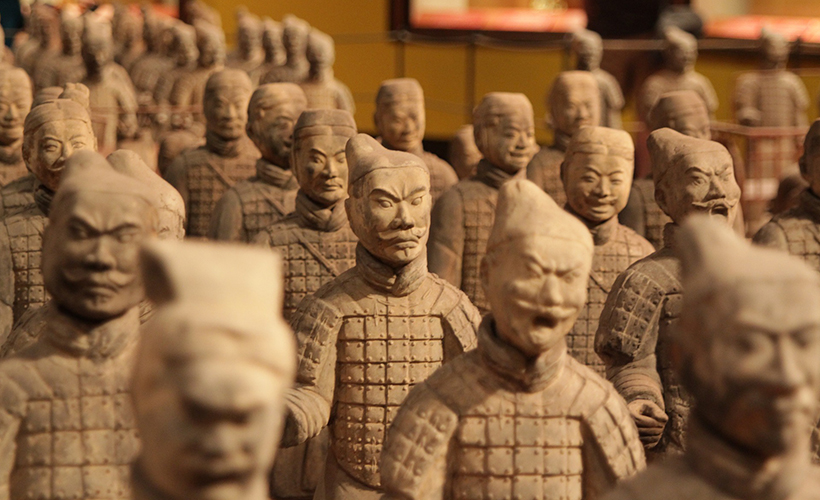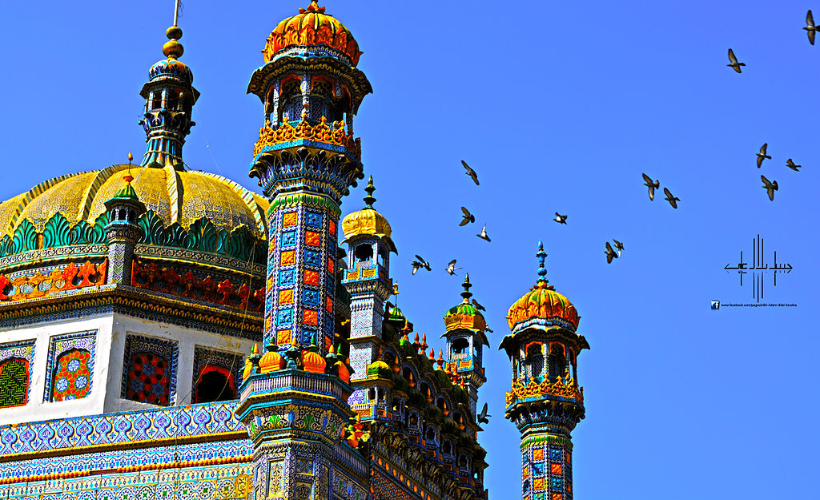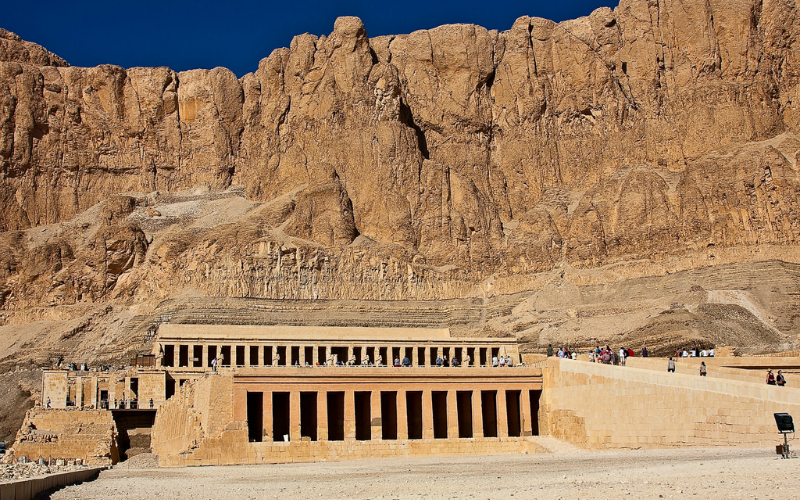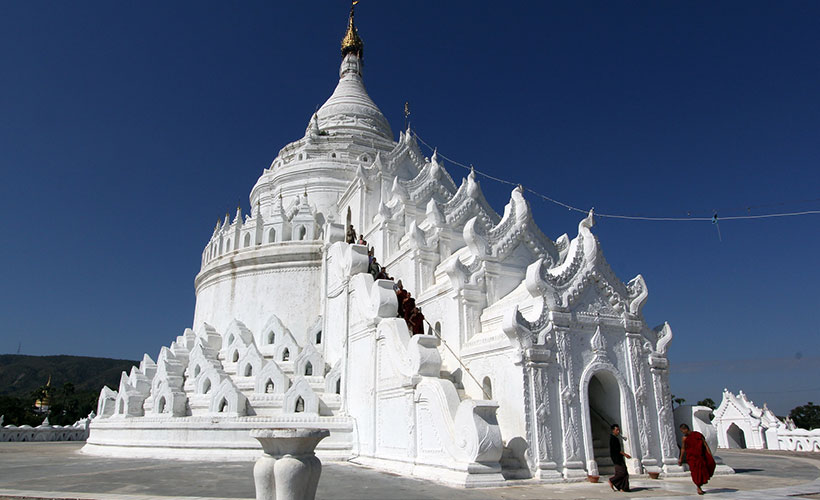
In a town near Mandalay, an all-white pagoda rises up above the landscape, creating a striking image against the backdrop of an ombre blue sky. Myanmar’s Hsinbyume Pagoda is located in the North of Mingun, just along the bank of the Irrawaddy River, and is sometimes referred to as the Taj Mahal of Myanmar. The awe-inspiring construction received its nickname as the story of how it was built is so similar to that of the original Taj Mahal in India.
Love lost
As to when exactly Hsinbyume Pagoda was built varies from historian to historian, with the closest estimates saying the structure was completed between 1807 and 1819. The only visible resemblance between this Hsinbyume Pagoda and India’s Taj Mahal though is the colour. Albeit that, the structure also has a romantic yet tragic story to tell. Prince (later King) Bagyidaw built the pagoda as a memorial to his beloved wife. Prince Bagyidaw married Princess (later Queen) Hsinbyume in 1803, but unfortunately, Princess Hsinbyume died during childbirth in 1816.
While the story of the pagoda is similar to that of the Taj Mahal, King Bafyidaw possibly chose white for the building to refer to his lost love whose name translates to ‘white elephant’. This is unconfirmed, but my romantic heart jumps to that conclusion.
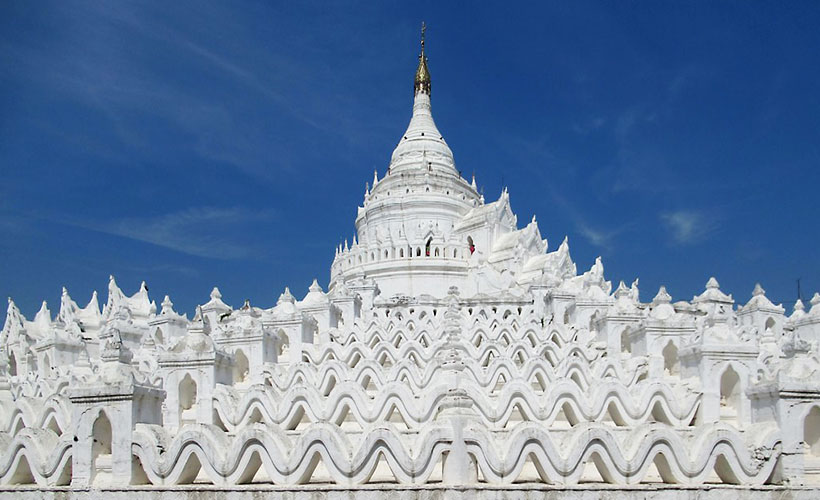
Devotion found
Myanmar is dotted by stunning stupas and beautiful temples, but Hsinbyume Pagoda is special. The pagoda itself is an impressive sight of seven concentric terraces created by wave-like structures. This gives Hsinbyume Pagoda an uncanny sense of movement. What the seven terraces represent are the seven rivers and mountain ranges around Mount Meru, while the tower in the centre represents the mountain itself. Mount Meru is a legendary mountain, believed to stand at the centre of the Buddhist universe.
According to legend, Buddha spent three months on the top of Mount Meru preaching amongst other things. This area is said to have been called Tavatimsa, and was inhabited by 33 divine beings and ruled by Sakka. When Buddha came back down to earth, Sakka built him a triple stairway made from gold, silver, and jewels. The Hsinbyume Pagoda reflects this as there is a triple stairway on the building’s east-facing side. At the top of the staircase is a small room that contains a statue of Buddha sitting on a throne.
A true symbol of love and devotion, Hsinbyume Pagoda is also known locally as Myatheindan Pagoda. In Burmese, ‘mye’ means emerald and ‘thein tan’ means 100, 000. And yes, you guessed it – the complex is replete with a whopping 100,000 emeralds.
Probably India’s most popular destination, the Taj Mahal is facing ruin, leading the government to take precautions.
India Is Capping The Number Of Visitors To The Taj Mahal
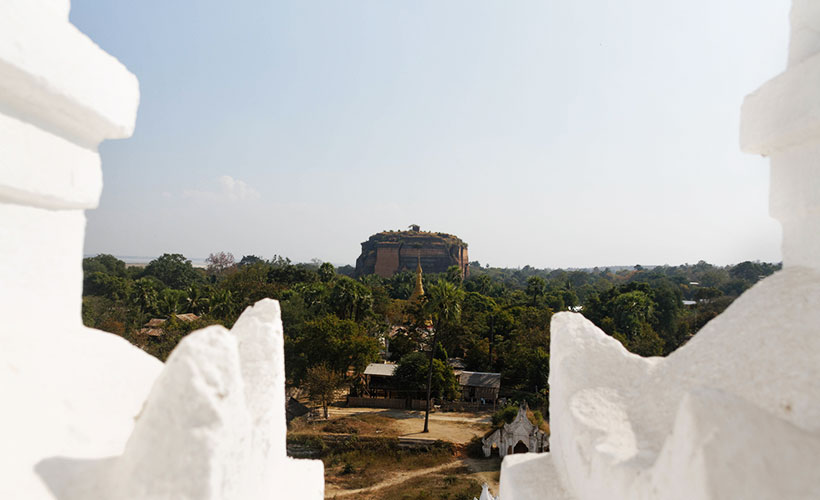
Getting there
It’s possible to visit the Hsinbyume Pagoda by taking a boat from Mandalay. The ride takes around one hour, which is long considering that it’s only a 10-kilometre trip, but it’s actually the fastest way to get to here. Plus, it makes for an exciting adventure! There are two ferries between Mandalay and Mingun each day. From the jetty in Mingun, hop on an ox-cart taxi to get to the pagoda.
The Hsinbyume Pagoda is a Buddhist holy site and many pilgrims visit with the belief that the pagoda will make their dreams come true. When here, they pay homage, light incense, and make offerings. As with all holy sites, remember to remove your shoes and socks, and keep your shoulders covered to display the proper respect.

